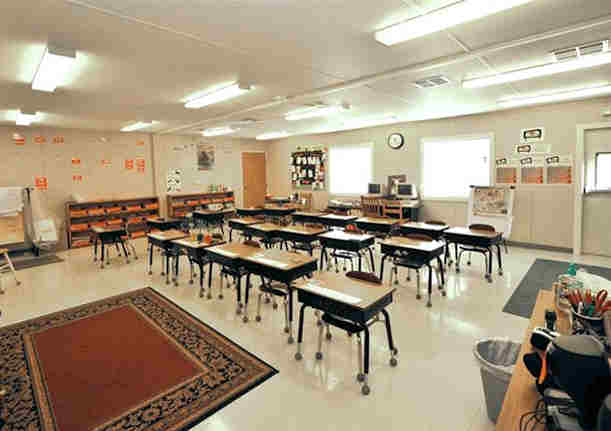Quick Recovery When Disaster Strikes
Modular construction is more cost-effective, faster and more environmentally friendly than standard building construction. But when something as unusual as a 5.8-magnitude earthquake strikes just 30 miles outside Richmond, VA, modular buildings can also help schools, healthcare centers and businesses bounce back quickly from disaster.
That’s exactly what happened on August 23, 2011, when the 2011 Virginia Earthquake shook Louisa and the Piedmont region of the state. The very strong quake caused widespread damage to buildings and resulted in evacuations in Richmond, Washington, DC, New York City, and as far north as Canada.

The quake caused a lot of damage; particularly to two area schools, Thomas Jefferson Elementary School and Louisa County High School. Although it impacted thousands of students, the school district was able to recover promptly by building temporary modular classrooms to accommodate the displaced students.
Similarly, arson in nearby Colonial Beach on Virginia’s eastern shore destroyed an early 1900s brick school building in September 2014. The fire displaced several hundred students from neighboring modular classrooms that were designated as part of the old building’s collapse zone. New modular classrooms were built to get the students back to class fast.
The accelerated construction schedule for modular buildings helps get the vital services of a community up and running quickly after a disaster. And modular builders, such as Modular Genius, which serves customers nationwide, can accommodate all sorts of design requirements, from mobile office trailers to multi-story school campuses and hotels.
Because they are constructed in a manufacturing plant in sections and then transported to the building site, temporary modular buildings can be deployed in a matter of hours or days and removed at a moment’s notice, making them indispensable in the aftermath of fires, earthquakes, tornados, hurricanes and floods. Their uses include:
- Command centers
- Mobile response units
- Relief housing
- Healthcare clinics
- Emergency equipment storage
- Sleeping facilities
- Dining facilities
- Emergency restrooms/showers
- Classrooms for displaced students
Permanent Modular Buildings
Permanent buildings are also manufactured and ready for delivery and installation far sooner than their site-built counterparts. A traditional construction project may take 12 months but can be completed in just six using modular construction. Built of steel, concrete and wood, modular buildings are designed to last for many decades.
Most of the construction process takes place in one of Modular Genius’ state-of-the-art manufacturing plants, resulting in minimal site disruption, fewer delays, reduced cost, and 50% faster delivery than traditional construction. This speed of construction allows businesses to start earning revenues faster.
Modular construction is also inherently green. Businesses can contribute to sustainable building initiatives and earn points toward LEED certification. It will also reduce your energy costs by as much as 10% to 40% and may enable you to take advantage of incentives that are unavailable to builders of traditional “stick-built” structures.
Permanent modular buildings are designed to stay in one location, but they can be easily relocated or reconfigured onsite, or moved to another location for a totally different use. This flexibility extends the life of the buildings and eliminates the need to demolish and rebuild aging or outdated stick-built buildings.
Today, beautiful, high-quality modular buildings can be designed in Richmond for any conceivable purpose. Whether you are recovering from a natural disaster or are interested in residential, commercial and industrial uses, both temporary and permanent modular buildings are available to meet your needs.
